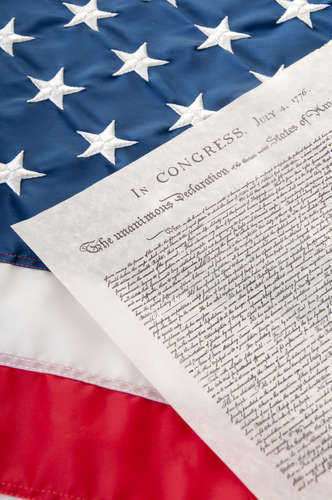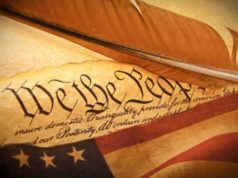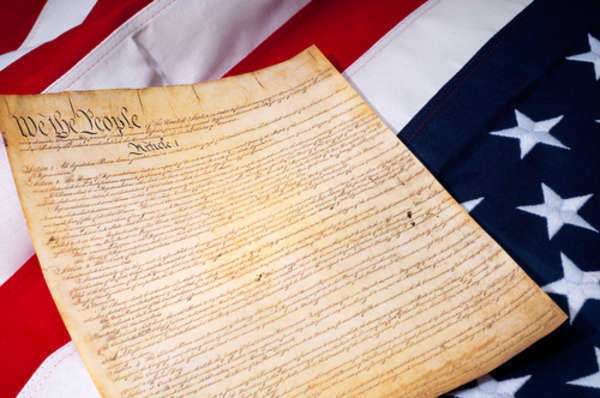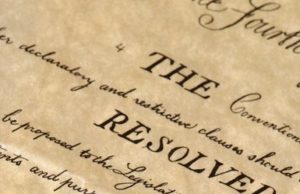
The United States was founded on the principle of democracy, where the citizens of the country have the right to choose the representatives who will govern them. In the early years of the United States, the process of electing the President and Vice President was not as well defined as it is today. However, the ratification of the 12th Amendment in 1804 provided rules for the election of the President and Vice President. This amendment has played a crucial role in maintaining the democratic principles of the country, and its significance cannot be overstated.
The 12th Amendment to the United States Constitution was proposed by Congress on December 9th, 1803. It was ratified on June 15th, 1804. The amendment addresses the election of the President and Vice President, and it replaced the original procedures that were laid out in the Constitution. It comprises of three sections, with each section setting out a different rule for the election of these two officials.
Section 1 of the amendment lays out the procedure for the Electoral College vote. It states that each elector has two votes; one for President and another for Vice President. The electors have to list the name of the person they are voting for in each of these positions and the person who receives the majority of the votes for President becomes the President. Similarly, the person who receives the majority of the votes for Vice President becomes the Vice President.
Section 2 of the amendment deals with the procedure for resolving a tie when no candidate has the majority of the electoral votes. In this case, the House of Representatives will choose the President, with each state delegation having one vote. The person who receives the majority of the votes from the state delegations becomes the President. The Senate chooses the Vice President in case of a tie.
Finally, section 3 of the amendment lays out the grounds for disqualifying the President or the Vice President from holding their office. It states that if the President or Vice President are found to be unfit for their office, they can be removed by impeachment.
The 12th Amendment was introduced following the 1800 Presidential Election between Thomas Jefferson, John Adams, and Aaron Burr. The election was marred by controversies, where the Founding Fathers had failed to distinguish between the positions of the President and the Vice President when they drafted the Constitution. According to the original text of the Constitution, each elector had two votes, and the person who received the most votes became the President, while the second-placed person became the Vice President.
The controversy arose because Thomas Jefferson and Aaron Burr, both members of the Democratic-Republican Party, had received the same number of votes, causing a tie. Under the original procedure, the House of Representatives had to decide on the winner, and it took 36 ballots before Thomas Jefferson was eventually declared the winner. The situation highlighted the need for a clear way of electing the President and the Vice President.
The 12th Amendment has been critical in shaping American politics. The amendment has ensured that the President and the Vice President are elected separately, thereby giving the people the opportunity to choose their preferred candidate for each position. Moreover, the amendment introduced the idea of running mates, where the presidential candidate chooses a Vice Presidential nominee running on the same ticket, as it is the political norm today.
The 12th Amendment has also had a profound impact on State politics. It has enabled states to appoint their electors following clear and concise rules. States are allowed to choose their electoral members, and each state has the same number of electors as it has members of Congress, the House of Representatives, and the Senate. The electors are appointed through the popular vote in the State, and they constitute the Electoral College.
The Electoral College has been one of the most discussed topics in American politics and governance. It has been criticized by some as an archaic system that often goes against the popular vote. Supporters of the system argue that it was designed to balance the desire for democratic representation with reasonable constraints on direct democracy. Whatever stance one has, it is essential to understand the role of the Electoral College in the election of the President and Vice President.
The 12th Amendment has also played a significant role in shaping political history in the United States. The amendment has seen a change of direction in the power dynamic between the President and the Vice President. Before the amendment, there was no distinction between the President and Vice President. As a result, the Vice President served only as a symbolic figurehead with little power or role beyond the ceremonial entourage. Since the ratification of the 12th Amendment, the Vice President has become a much more prominent figure in American political life, holding active positions in the Senate and Cabinet.
In the 20th century, the 12th Amendment was carried out in the United States several times. In 2000, the election between George W. Bush and Al Gore had to be decided by the Supreme Court when the Electoral College votes in Florida were contested. In 2016, Donald Trump was able to win the Presidential election despite not having the plurality of votes. These events illustrate how the 12th Amendment continues to play a critical role in American politics and governance.
The 12th Amendment is unique to the United States and is different from other countries around the world. In England, the head of the State and the Head of the Government are separate individuals. In contrast, the American system mixes these two roles into one, with the President holding both the positions. Organizations like the United Nations elect their Secretary-General through the appointment method where member countries vote collectively. The United States, however, uses an electoral college to elect the President and Vice President.
The 12th Amendment has also influenced laws and governance in each of the 50 states. Many states use the winner-take-all system, where the candidate who wins the popular vote in the state receives all the electoral votes, while others use the proportional system, where the electoral votes are assigned based on the percentage of the popular vote received by each candidate. Some states also have laws that bind their electors to vote according to the result of the popular vote.
In conclusion, the 12th Amendment to the United States Constitution has shaped American political and governance history. It was introduced to address the controversies of the 1800 Presidential Election and has provided a clear and concise way of electing the President and Vice President. The amendment has ensured that each State plays a crucial role in the election, with the appointment of their electors following specific rules. The amendment has also seen a change in the power dynamic between the President and the Vice President, with the latter holding an active position in American politics. The significance of the 12th Amendment on American history cannot be overstated, and it will continue to shape America’s political and governance system for years to come.
The Twelfth Constitutional Amendment provides for one of the most important provisions in the United States Constitution and is one of the Amendments that would change how the United States Government would be shaped and select its leaders. The Twelfth Amendment was introduced by Congress on December 9th, 1803, and ratified by the states on June 15th, 1804.
This Constitutional Amendment would provide for the process in which the President and Vice-President of the United States would be elected, creating what is now known as the Electoral College. Though there was already a procedure in place to elect the President and Vice-President, the original proved to have some fallacies which were made apparent in the 1796 and 1800 elections.
Prior to the inclusion of the Twelfth Amendment, the procedure called for each elector to cast two votes, and those two votes could not be for two people within the State of residency of said elector. If one person received the majority of votes, that person would win the election. If more than one would receive the majority of votes, it would be up to the House of Representatives to choose one of those individuals to become President. If no majority could be determined, the House would choose from five individuals with the most electoral votes.
The Vice-President would be chosen by appointing the person with the second-highest number of electoral votes with the position. The majority of votes were not required for becoming Vice-President. If there was a tie for second place, the Senate would appoint the Vice-President, with each member casting a vote. However, it was never included in the Constitution whether or not the current Vice-President could cast a vote that could render a tie-breaking decision.
Under this system, the 1796 election resulted in having a President, John Adams, a member of the Federalist Party, and Thomas Jefferson, a member of the Democratic-Republican Party, being elected Vice-President. This occurred because members of the Federalist Party decided to use their second vote and disperse them among various candidates, which allowed for Jefferson to garner the second most electoral votes, and thus, being appointed to the position. In having two different party members elected to the President and Vice-President positions, the inherent differences in political agendas and philosophies would ultimately clash, thus making it extremely difficult to work together.
The 1800 election posed another problem with the original procedure, where a tie could potentially always occur if the Electoral College voted in accordance with their political party affiliation. This would result in the House of Representatives undertaking multiple ballots to determine a President.
With the introduction of the Twelfth Amendment to the Constitution, a new system would be implemented regarding the casting of votes. The actual structure of the Electoral College would not change, however. Instead of casting two votes for a Presidential candidate, the new Amendment required two distinct votes: one for President and the other for Vice President. A majority of electoral votes were still required to be elected to either office or position. In the event that there was no majority, the House of Representatives would choose a President under the guidelines of the original procedure.
The only difference under the Twelfth Constitutional Amendment is that the House would choose among three of the people receiving the most electoral votes, rather than the five prescribed in the original process. The Senate would choose a Vice President in the case of no majority, among the two having the most votes. If in the case that there are multiple individuals in a tie for second place, they would also be considered.
A new procedure introduced by the new Amendment was the requirement of a two-thirds quorum for balloting procedures. It also provided that if no decision could be reached for a President by March 4th, the first day of the Presidential term, then the elected Vice-President would act as the President. However, the Presidency term date would be eventually revised and changed to January 20th. If no President or Vice-President were to be elected upon that date, Congress would appoint a President who would meet the necessary qualifications to take that position.


























